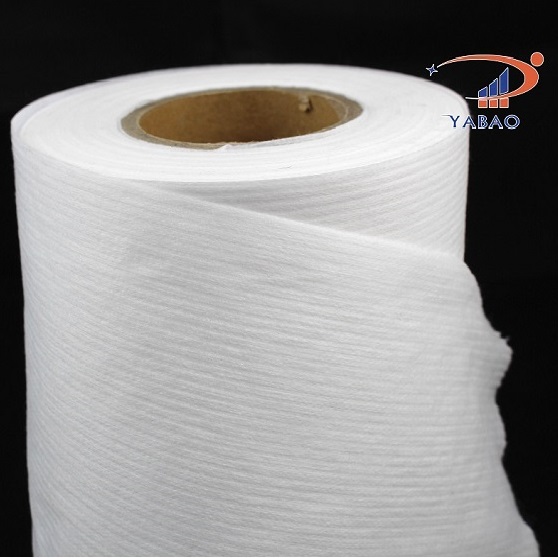The cost of nonwoven fabric can vary depending on several factors, and it may be higher or lower than other types of fabrics depending on the specific application and requirements.
Here are some considerations regarding the cost of nonwoven fabric and the factors that influence its pricing:
Production Method: The manufacturing process used to produce nonwoven fabric can significantly impact its cost. Different production methods, such as spunbond, meltblown, or needle punching, have varying levels of complexity and associated costs.
Raw Materials: The type and quality of fibers used in nonwoven fabric production can affect its cost. Synthetic fibers like polypropylene or polyester are commonly used and are generally less expensive compared to natural fibers like cotton or wool.
Fiber Characteristics: The properties of the fibers used in nonwoven fabric, such as denier (fiber thickness), length, and specialty additives, can influence the cost. Fibers with specific performance attributes or enhanced functionalities may be more expensive.
Production Scale: The scale of production can impact the cost of nonwoven fabric. Large-scale manufacturing processes can benefit from economies of scale, leading to lower production costs compared to smaller-scale or custom production runs.
Quality and Performance Requirements: Nonwoven fabric with higher quality standards or specific performance characteristics may come at a higher cost. Factors such as strength, durability, breathability, and barrier properties can influence the pricing.
Finishing and Treatments: Additional treatments, coatings, or finishes applied to nonwoven fabric to enhance its performance, such as water repellency or flame resistance, can contribute to the overall cost.
Market Demand and Competition: Supply and demand dynamics within the nonwoven fabric market can influence pricing. Factors such as availability, market competition, and fluctuations in raw material costs can affect the final price.
Customization and Specialization: Nonwoven fabric that requires customization or specialized features tailored to specific applications may have higher costs associated with research, development, and production adjustments.
It’s important to note that the cost of nonwoven fabric can vary significantly based on these factors, and it’s advisable to consult with manufacturers, suppliers, or industry experts to get accurate pricing information for specific nonwoven fabric products and applications.
How is nonwoven fabric manufactured? What are the different production methods used?
Nonwoven fabric is manufactured through a variety of production methods, each with its own unique process.
Here are some of the common methods used for nonwoven fabric manufacturing:
Spunbond: In the spunbond process, continuous filaments of thermoplastic polymers, such as polypropylene or polyester, are extruded and stretched to form thin fibers. These fibers are then laid down onto a moving belt or conveyor, china nonwoven fabric factory bonded together using heat and/or pressure, and cooled to create a web of nonwoven fabric.
Meltblown: Meltblown is a process where thermoplastic polymers, such as polypropylene, are melted and extruded through fine nozzles to form microfibers. These microfibers are then blown by high-velocity hot air or other means onto a collecting belt or drum, forming a random and porous web. The fibers are subsequently bonded together through cooling or additional processes.
Needle Punching: Needle punching involves pushing barbed needles repeatedly through a web of fibers. The barbs catch and entangle the fibers, interlocking them to form a cohesive fabric structure. This method is often used for thicker and denser nonwoven fabrics and can be combined with other processes for added strength and stability.
Spunlaid: Spunlaid is a combination of the spunbond and meltblown processes. In this method, fine fibers are extruded and laid down onto a moving belt or conveyor. The web formed by these fibers is then bonded together using heat, pressure, or adhesives. Spunlaid fabrics can have a wide range of characteristics depending on the specific combination of processes used.
Wetlaid: The wetlaid process involves suspending fibers, either natural or synthetic, in water to form a slurry. The slurry is then deposited onto a moving screen or conveyor, and the water is drained or vacuumed through the screen. The remaining fibers are bonded together using mechanical, thermal, or chemical methods.
Chemical Bonding: Chemical bonding methods involve applying chemical binders or adhesives to a web of fibers. The fibers are then bonded together through curing or drying processes. Chemical bonding can be combined with other manufacturing methods to enhance the strength and stability of nonwoven fabrics.
Spunlace: Spunlace, also known as hydroentanglement, involves high-pressure jets of water that entangle and interlock fibers to form a fabric structure. This process is commonly used for nonwoven fabrics with excellent softness and absorbency, such as wipes and medical textiles.
These are just a few examples of the many production methods used in nonwoven fabric manufacturing. Manufacturers may also combine different processes or employ variations to achieve specific properties or meet the requirements of different applications.
